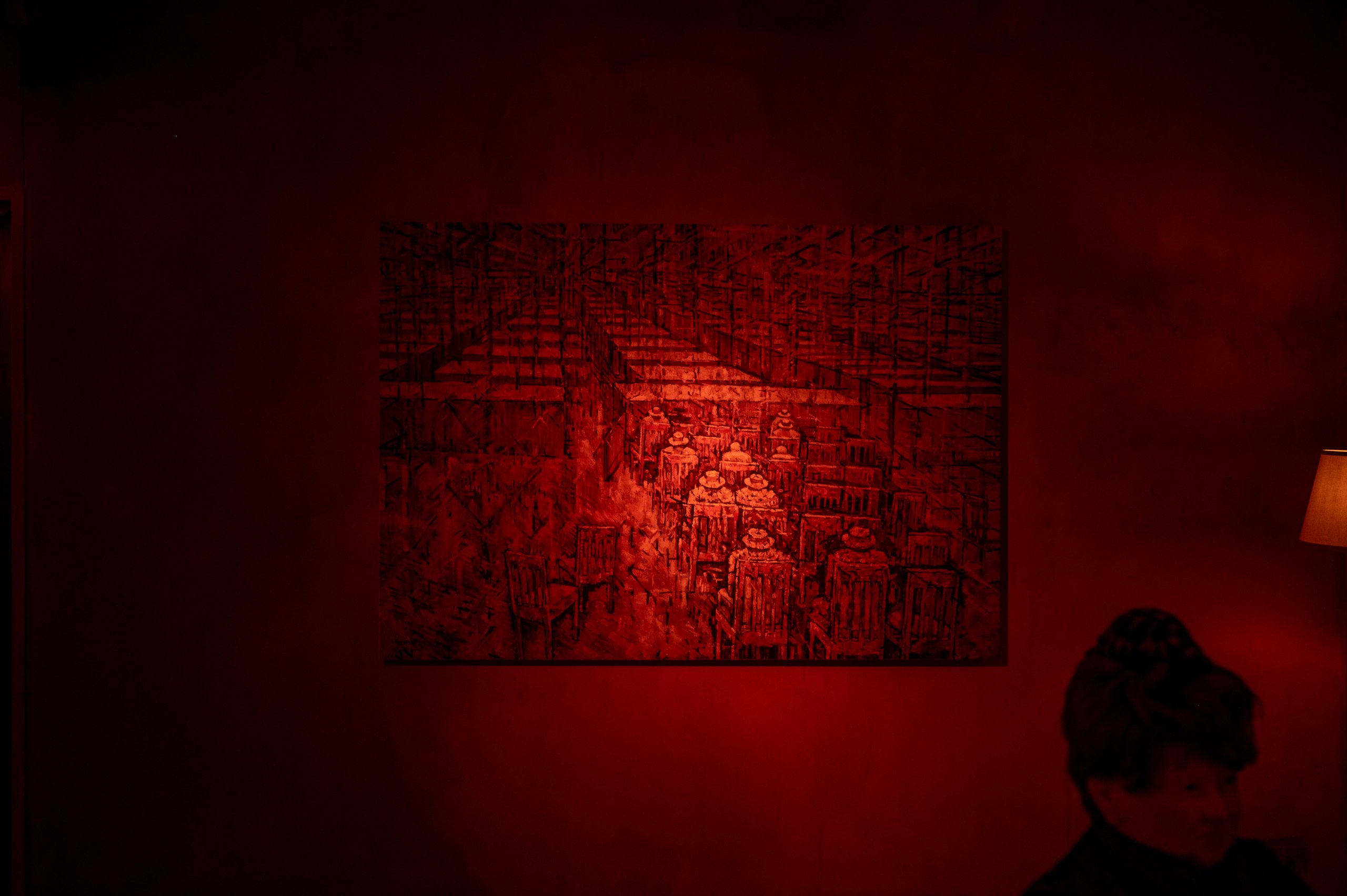Hergest: Trem | Kaleidoscope
May 25 2020

Set to open in June 2020 at the Swiss Institute in New York, “Hergest: Trem” is a collaborative project of artists Mathis Gasser (Swiss, b. 1984, lives and works in London) and Angharad Williams.
Since the 2008 financial crisis, cinema has seen an increasing number of gigantic flying objects emerging from the sky, hovering above humanity as an imposing, unknown threat. This kind of representation is not incidental, posits London artist Mathis Gasser: disaster capitalism requires a certain CGI-driven visuality of alien destruction and doom, but always in abstracted, allegorized ways. Attacking visual culture with the intimacy of a Comic Con nerd and the precision of an ethnographer, Gasser builds archives of hundreds of images sourced from cinema, comics, sci-fi, art and the news to parse the lexica of contemporary pop culture. Works like Inhabitants (After DirkLoechel)(oil on canvas, 2017) are close to taxonomical: based on a piece of fan art by a DeviantArt user, it charts interplanetary ships from an almost impossible plethora of science-fiction universes according to size.
Trained in Geneva and London, the Swiss-born artist mainly employs painting and collage to conduct his rigorous, ongoing studies of particular image cultures; it’s a medium that offers slowness in an otherwise frenzied image culture and commands a particular form of intense viewing. He cites the history of appropriation in art as one inspiration for this: the process of taking an image, copying it, as a way to pay tribute or understand it better. His research is largely guided by the images themselves: for example, a fascination with images of UN buildings and banks has led to a growing series of works in recent months, without a particular final output in mind. Another example is his ongoing series “Heroes and Ghosts” (2007–): small oil paintings of fictional characters sources from Hollywood cinema, sci-fi, comics, pulp literature and works of art. Portrayed in isolation, gazing back at the viewer, Gasser prompts a museum-like reflection of their pop-cultural appeal: Why do these heroes and anti-heroes hold such sway of our imagination, sometimes even across generations? Is this not the pantheon of our time?
While Gasser’s work across painting, sculpture and film echoes the esoteric nature of digital fan art communities, it bears a certain somber, museum-like quality. This is not incidental: the artist is fascinated with these enormous storage units of culture where civilization is ossified and enters a kind of zombie state, half-dead, half-alive, like run-down fun houses. Particularly in contemporary art, museums are ambivalent spaces: they both constitute culture and stand firmly outside it. Embracing this “museal” methodology in his own work, Gasser has in recent years ventured into installation via his collaboration with Welsh artist Angharad Williams under the moniker Hergest. Producing total environments in houses and galleries filled with furniture, dolls, costumes, mysterious relics and occasional performers, their work function as uncanny narrative spaces in the logic of movie or theater set design, the result of months of sharing far-spanning cinematic and pop-cultural material. The storyline is rarely (if ever) given away, although Gasser cites David Lynch’s little-known short film Rabbits (2002) as one recent point of reference; more so than a script, what matters is the transformation of space, the production of immersive environments that blend image, fiction, fantasy and reality. The duo opens their first institutional solo show, “Hergest: Trem,” at the Swiss Institute in New York this summer.
by Jeppe Ugelvig
